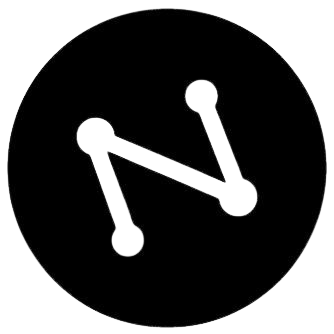
The routine of medical clinics has changed irreversibly. The old metric of a full schedule no longer guarantees financial health or operational efficiency. Today, management faces a perfect storm: more informed and demanding patients, fierce competition, rising operational costs, and the complexity of negotiating with insurance providers. In this scenario, a poorly managed patient flow, a wave of last-minute cancellations, or an internal communication failure is all it takes to break the rhythm of the entire operation.
Productivity has evolved from a desirable goal to a factor of survival. And at the center of this battle is scheduling, which has transformed from a simple administrative task into a powerful strategic lever. Those who master their schedule master their cash flow, resource utilization, and, fundamentally, the patient experience. It is at this point that intelligent scheduling emerges as the definitive solution, orchestrating the patient journey based on data, rules, and automation.
Before we continue, we need to ask: Are you already familiar with Ninsaúde Clinic? Ninsaúde Clinic is a medical software with an agile and complete schedule, electronic medical records with legal validity, teleconsultation, financial control and much more. Schedule a demonstration or try Ninsaúde Clinic right now!

What, Exactly, Is Intelligent Scheduling?
Intelligent scheduling transcends the idea of a digital calendar. It is a dynamic ecosystem that manages the schedule based on automation, business rules, and historical data analysis to optimize every available time slot.
Unlike traditional scheduling—which is manual, reactive, and focused solely on "filling gaps"—the intelligent model acts proactively. It seamlessly connects patient acquisition channels (website, WhatsApp, patient portals), the in-clinic workflow (check-in, triage, consultation, exams), and the back-office operations (finance and billing), creating a living, predictive schedule.
Its core pillars include:
- Automated Communication: Dispatches reminders, confirmations, preparation instructions, and satisfaction surveys via WhatsApp, SMS, and email without manual intervention.
- Dynamic Resource Management: Allocates rooms, equipment, and staff based on rules for duration, sanitization needs, and compatibility, preventing bottlenecks and idle time.
- Predictive Analytics: Uses historical data to forecast demand peaks, identify cancellation patterns, and suggest the optimal distribution of time slots by insurance plan or specialty.
- Rule-Based Self-Service Booking: Offers patients a self-scheduling portal that already contains eligibility rules, verifying insurance coverage, procedure types, and provider availability, thus preventing booking errors.

The Villains of Productivity in Traditional Scheduling
Clinics operating on the traditional model face revenue and efficiency losses that often become a normalized part of the routine. The problems are concentrated in three critical areas:
1. No-Shows and Last-Minute Cancellations: The absence of automated, proactive communication is the main cause of high no-show rates. When the staff only notices the absence at the time of the appointment, the window of opportunity to fit in a patient from the waitlist has already closed. Every empty slot represents a direct loss of revenue and an unrecoverable cost of idle resources (room and provider).
2. Poor Coordination of Resources and Time: Without clear rules about the duration of each procedure or the time needed for preparation and cleaning, chaos ensues. The result is a "broken" schedule, with idle rooms at one moment and overcrowding at another. In specialties with complex workflows (such as ophthalmology or diagnostic imaging centers), this lack of coordination leads to queues, cascading delays, and stress for both patients and staff.
3. Lack of Strategic Vision: A manual schedule is a pool of untapped data.
Managers make decisions based on intuition, unable to answer crucial questions such as:
- Which provider has the highest occupancy rate?
- Which insurance plan generates the most cancellations?
- What is the average time between booking and the appointment (clinical lead time)?
- Which days of the week have the most idle time?
This blindness prevents strategic planning, price optimization, and the intelligent allocation of appointment availability.

Practical Strategies to Implement Efficient Scheduling
The transition to an intelligent model can be done gradually and pragmatically. Focus on these high-impact actions:
- Automate the Confirmation Journey: Define a clear communication sequence. For example:
- 72 hours prior: Initial reminder with a link to confirm or reschedule with a single click.
- 24 hours prior: Final reminder with important details (address, preparation instructions, necessary documents).
- 2 hours prior: A short "we are waiting for you" message with a link for online check-in.
- Standardize Times and Create Buffers: Develop a master table with the standard duration for each type of service (first consultation, follow-up, procedure X). Add mandatory buffers (time gaps) for sanitization and room preparation. This creates a predictable flow and prevents delays.
- Use Intelligent Waitlists: Segment your waitlist by procedure type or insurance plan. Configure the system to automatically notify the next patient on the list when a compatible cancellation occurs, sending a notification via WhatsApp.
- Integrate the Schedule with Financial Operations: The schedule is your "production order." By integrating it with the finance department, you can forecast daily revenue, automate physician reimbursement calculations, and, with payment tools, send links for pre-payment, which drastically reduces no-shows for higher-value procedures.
- Define Priority Rules: Reserve a percentage of the schedule for strategic slots, such as urgent follow-ups or new private-pay patients. This ensures flexibility without disrupting the day.

The Impact on the Patient Experience: Beyond Efficiency
A productive clinic is not just one that does more, but one that delivers a superior experience. Intelligent scheduling is the foundation for this.
- Less Waiting Time: With a balanced schedule and online check-in, the patient spends less time in the waiting room and feels that their time is valued.
- Proactive and Clear Communication: The patient receives all the information they need at the right time and through their preferred channel, which reduces anxiety and demonstrates genuine care.
- A Sense of Organization and Control: Digital calling screens in the reception area, real-time appointment status updates, and a smooth workflow convey professionalism and security—decisive factors for patient loyalty.
Data-Driven Management: Measure to Improve
Without analysis, there is no optimization. Keep a close watch on these key performance indicators (KPIs):
- Occupancy Rate:
(Scheduled Hours / Available Hours) x 100. Analyze by provider, room, and day of the week to identify opportunities for improvement. - No-Show Rate:
(No-Shows / Confirmed Appointments) x 100. Segment by booking channel (online vs. phone) and by insurance plan to find patterns. - Clinical Lead Time: The average time between when an appointment is booked and when it takes place. If it is too high, it may be a sign that you need to increase appointment availability.
Use this data to make strategic decisions, such as adjusting schedules during seasonal periods (more pediatricians in the winter, more dermatologists in the summer) or launching campaigns to fill less busy time slots.

The Schedule as the Clinic's Operational Brain
Productivity in modern healthcare is not the result of chance or the heroic efforts of the front-desk team. It is the result of a system designed for efficiency. The intelligent schedule is the operational brain that synchronizes people, resources, and expectations.
By automating communication, standardizing processes, integrating departments, and analyzing data, the clinic transforms its scheduling from a simple calendar into its greatest strategic tool. The result is a virtuous cycle: more services delivered with the same infrastructure, a team that works with less stress and more purpose, and satisfied patients who become promoters of your brand. The question is no longer if your clinic should adopt this approach, but how quickly it can start.
Liked the information? Then prepare for a continuous journey of knowledge by following our blog. Are you a health professional and not yet familiar with the benefits of Ninsaúde Clinic? Stay ahead, optimize your processes, and elevate excellence in patient care!

